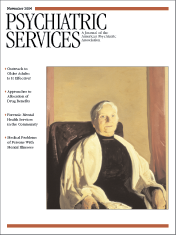Helping Children With Autism Learn: A Guide to Treatment Approaches for Parents and Professionals
As director of the autism clinic at the University of California, Los Angeles, Bryna Siegel, Ph.D., has undoubtedly worked with a rich tapestry of individuals with autistic spectrum disorders. Her extensive clinical experience is deftly communicated in Helping Children With Autism Learn: A Guide to Treatment Approaches for Parents and Professionals. In this book, Dr. Siegel guides teachers, therapists, and parents through the often confusing landscape of ideas about how to effectively enable children who have autism spectrum disorders to learn.
The first section of the book competently explores the known information about the etiology of autism spectrum disorders. It also expertly explains the need to examine specific learning disabilities that occur among children with these disorders. Siegel establishes the basis for the methodology of examining specific symptoms of autism spectrum disorder and how to effectively treat them, which are discussed throughout the remainder of the book.
In the second section, specific disabilities among children with autism spectrum disorder are examined in detail, and treatment options are explained in clear, crisp language. The writing is accessible to a wide audience despite the discussion of potentially complex issues, such as theory of mind. Siegel anticipates potential problems with the techniques she describes and preemptively offers alternative solutions. She comprehensively examines all the most common deficits among children who have autism spectrum disorders and offers a wide variety of approaches to aid the child in overcoming these obstacles.
The final section presents an excellent discussion of pragmatic methods of helping children with autism to learn, such as ABA/DTT (applied behavior analysis and discrete trial teaching) and the TEACCH curriculum (Teaching and Education of Autistic and related Communication handicapped CHildren). Both methods are based on principles of behavior learning theory. Siegel explains these methods in a very accessible fashion while insightfully critiquing their strengths and weaknesses. She also examines several model programs, but, as she emphasizes throughout the book, no single method will work for every child. In the final chapter, "Putting the 'I' Back in IEP: Creating Individualized, Meaningful Life Learning Experiences," this message is reaffirmed, and a very effective conclusion is delivered that synthesizes the previous sections very well.
I highly recommend this book to any parent, teacher, or health professional, or any other person who has contact with children with an autism spectrum disorder. The author's earlier work, The World of the Autistic Child, was received very positively eight years ago, and this her latest work is likely to receive similarly strong praise.
Dr. Isaacson is a child and adolescent psychiatry fellow in the department of psychiatry of Louisiana State University Health Science Center in New Orleans.



